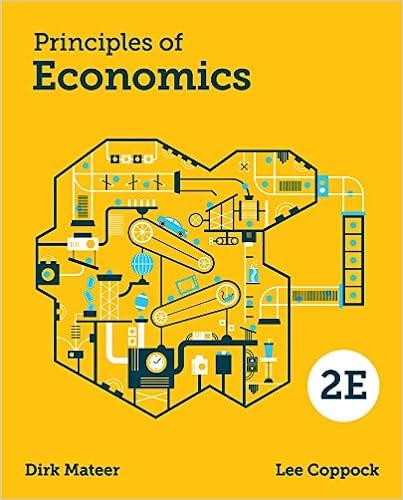1.a. Michaels opportunity cost is 2 sculptures for each painting he produces. How do we know this?...
Question:
1.a. Michael’s opportunity cost is 2 sculptures for each painting he produces. How do we know this? If he devotes all of his time to sculptures, he can produce 10. If he devotes all of his time to paintings, he can produce 5. The ratio 10:5 is the same as 2:1. Michael is therefore twice as fast at producing sculptures as he is at producing paintings. Angelo’s opportunity cost is 3 sculptures for each painting he produces.
If he devotes all of his time to sculptures, he can produce 6. If he devotes all of his time to paintings, he can produce 2. The ratio 6:2 is the same as 3:1.
b. For this question, we need to compare Michael’s and Angelo’s relative strengths.
Michael produces 2 sculptures for every painting, and Angelo produces 3 sculptures for every painting. Because Michael is only twice as good at producing sculptures, his opportunity cost of producing each painting is 2 sculptures instead of 3. Therefore, Michael is the low-
opportunity-
cost producer of paintings.
c. If they specialize, Michael should paint and Angelo should sculpt. You might be tempted to argue that Michael should just work alone, but if Angelo does the sculptures, Michael can concentrate on the paintings. This is what comparative advantage is all about.

b. Yes, because it is not a straight line.
c. The opportunity cost is that the student’s grade falls from 96 to 76 in history.
4.a. Positive
d. Normative
b. Positive
e. Normative
c. Normative
Step by Step Answer:







